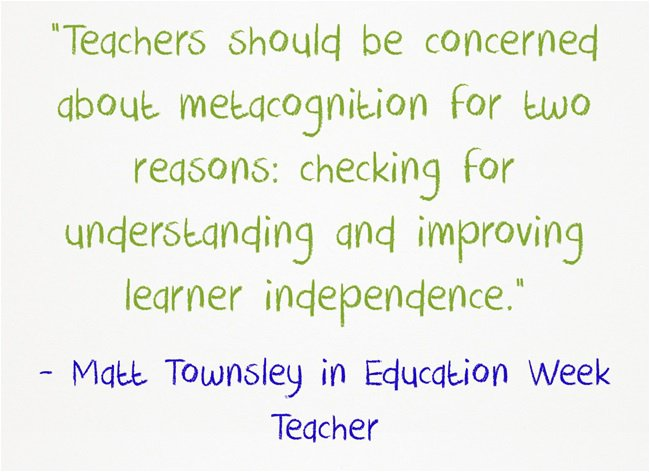Teacher
Instructional Challenge: Building meta-cognitive skills for our students.

Having metacognition is part of being a CHS Successful Learner. It can be challenging to help students think about how they think and learn.
Metacognition is, put simply, thinking about one’s thinking. More precisely, it refers to the processes used to plan, monitor, and assess one’s understanding and performance. Metacognition includes a critical awareness of a) one’s thinking and learning and b) oneself as a thinker and learner.
Being in The Learning Pit is part of metacognition. Using the CHS Learner Strategies is some ways that students can get OUT of The PIT.
Here's some more info...
In “Promoting Student Metacognition,” Tanner (2012) offers a handful of specific activities for biology classes, but they can be adapted to any discipline. She first describes four assignments for explicit instruction (p. 116):
- Preassessments—Encouraging Students to Examine Their Current Thinking: “What do I already know about this topic that could guide my learning?”
- The Muddiest Point—Giving Students Practice in Identifying Confusions: “What was most confusing to me about the material explored in class today?”

- Retrospective Postassessments—Pushing Students to Recognize Conceptual Change: “Before this course, I thought evolution was… Now I think that evolution is ….” or “How is my thinking changing (or not changing) over time?”
- Reflective Journals—Providing a Forum in Which Students Monitor Their Own Thinking: “What about my exam preparation worked well that I should remember to do next time? What did not work so well that I should not do next time or that I should change?”
Next are recommendations for developing a “classroom culture grounded in metacognition” (p. 116-118):
- Giving Students License to Identify Confusions within the Classroom Culture: ask students what they find confusing, acknowledge the difficulties
- Integrating Reflection into Credited Course Work: integrate short reflection (oral or written) that ask students what they found challenging or what questions arose during an assignment/exam/project
- Metacognitive Modeling by the Instructor for Students: model the thinking processes involved in your field and sought in your course by being explicit about “how you start, how you decide what to do first and then next, how you check your work, how you know when you are done” (p. 118)
To facilitate these activities, she also offers three useful tables:
- Questions for students to ask themselves as they plan, monitor, and evaluate their thinking within four learning contexts—in class, assignments, quizzes/exams, and the course as a whole (p. 115)
- Prompts for integrating metacognition into discussions of pairs during clicker activities, assignments, and quiz or exam preparation (p. 117)
There is more information in this link:
Instructional Challenge: Monologue vs. Dialogue
This instructional challenge consists of monitoring and adjusting monologue vs. dialogue in your classroom. This challenge is part of the Visible Learning Mind frames. Teachers are encouraged to listen to students' learning including their questions, ideas, struggles, strategies for learning, successes, interactions with peers, and their outputs. So, I encourage you to balance your listening with your talking.
Additional Resources
Mindset:
Learning Intentions: